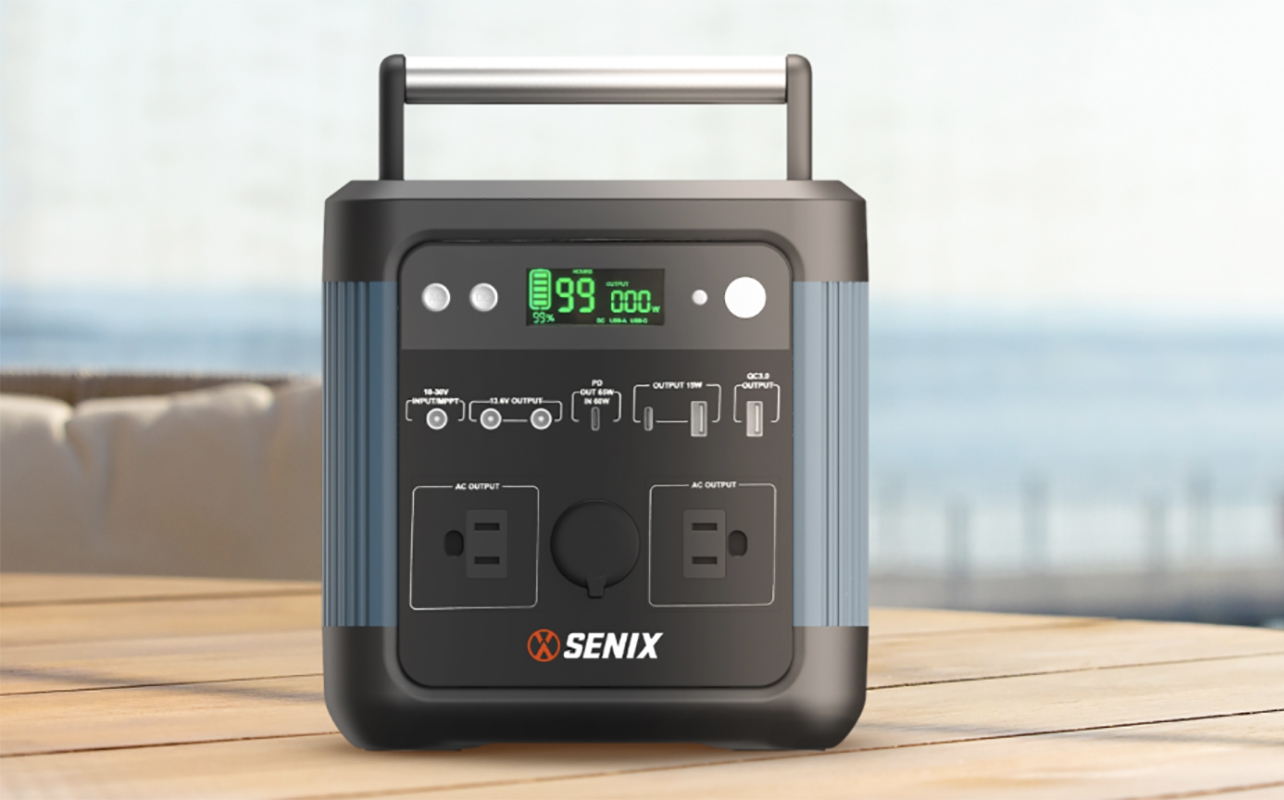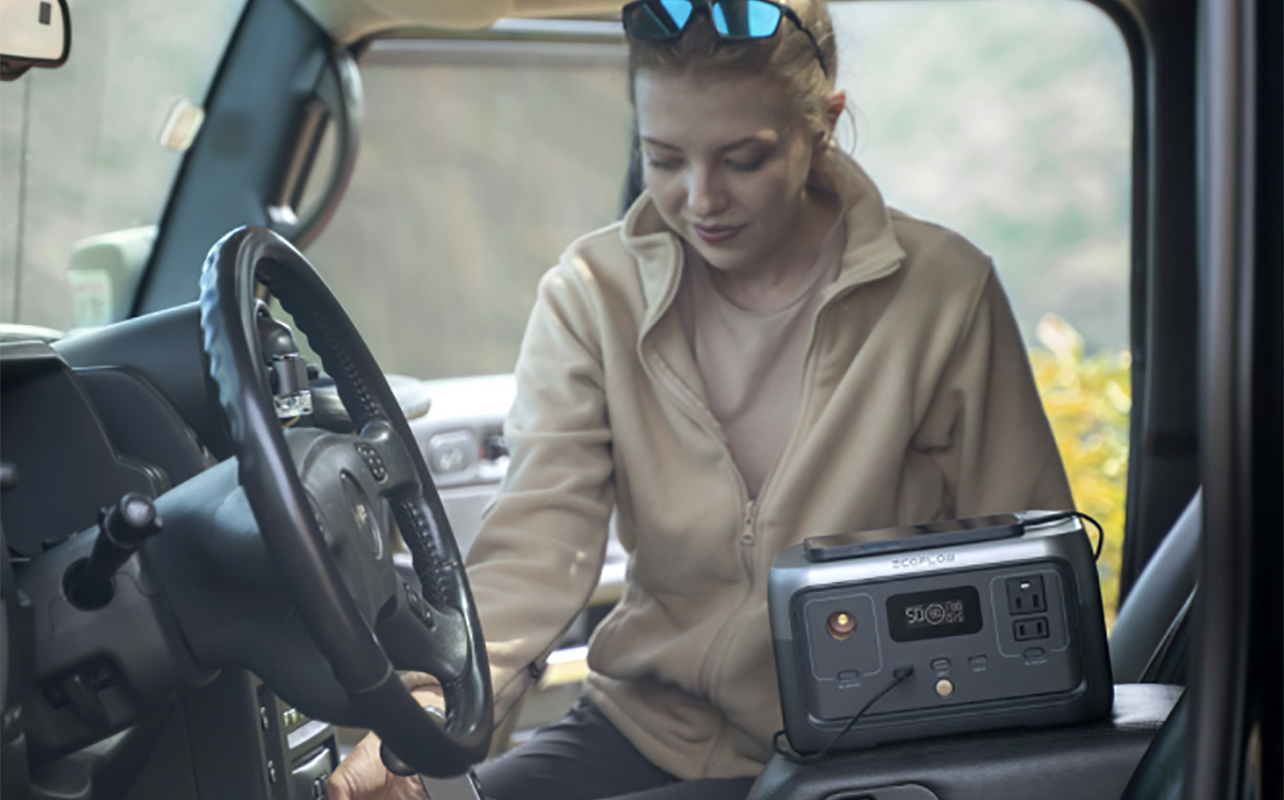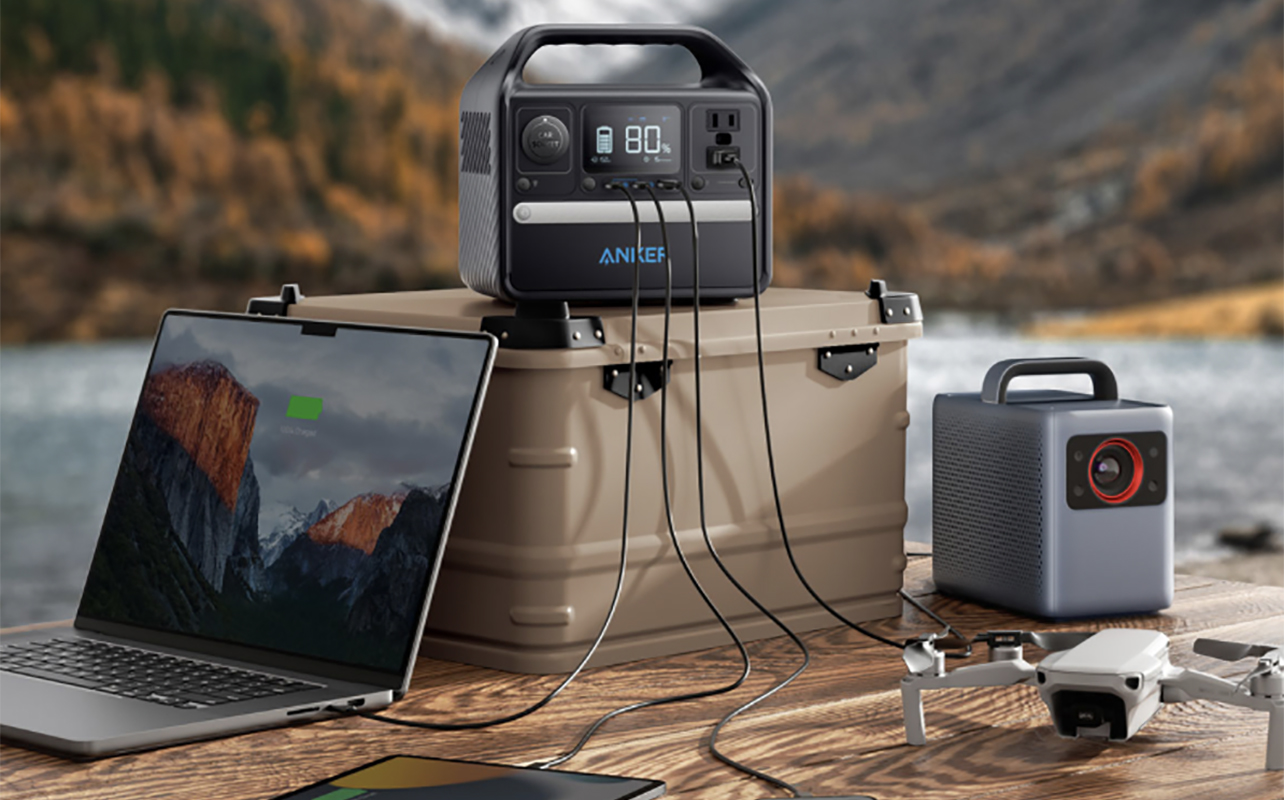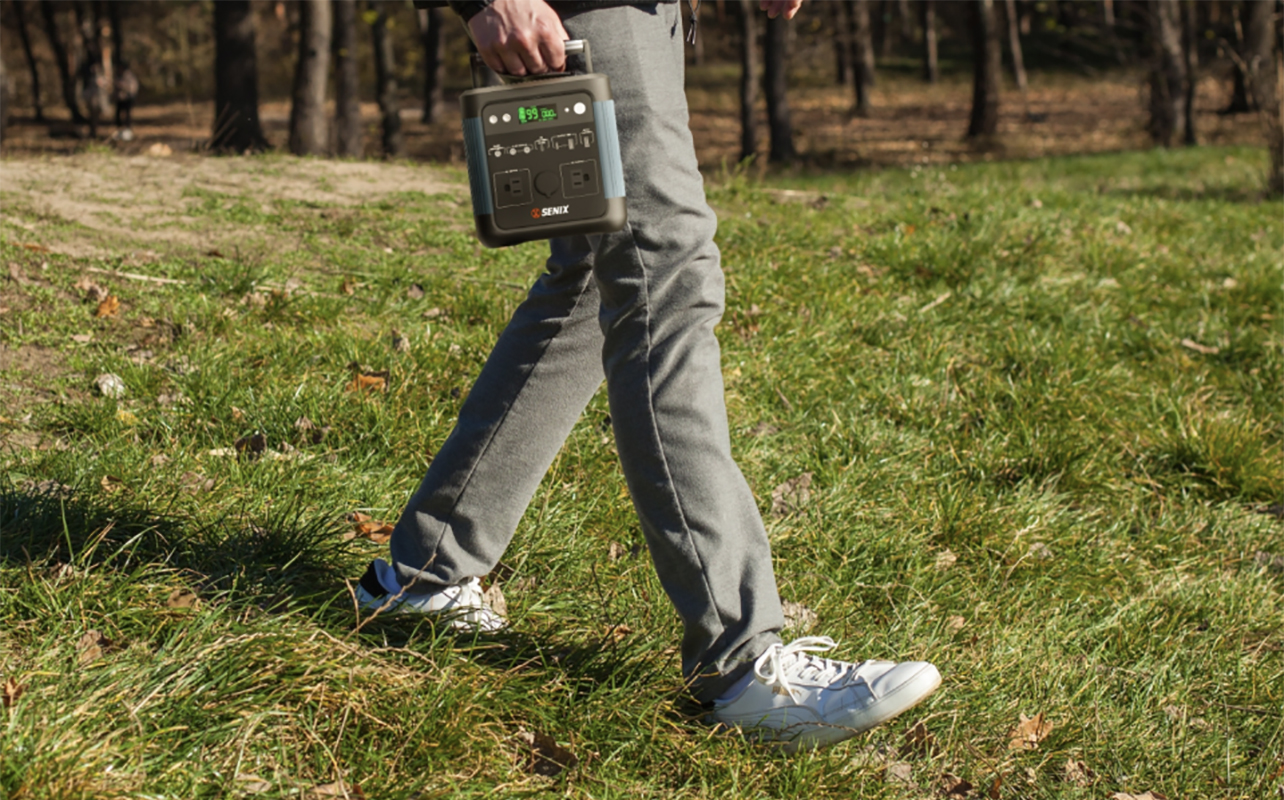
When you think about a portable power station, you might initially believe it’s just a back-up device to use at home in the event of a power outage. But it’s actually much more than that. A portable power station is a compact, versatile battery-powered device that can store and supply electricity for various applications. This includes both at home and on the go. These power stations are increasingly popular for a variety of uses. This does indeed include emergency backup power during an outage at home. But they’re also useful for outdoor adventures as well.
Whether you need to charge devices while on the go or ensure your essential appliances stay powered during an outage, a portable power station is a reliable and eco-friendly solution. As more people embrace outdoor activities and self-sufficiency, portable power stations are becoming an indispensable tool for modern life, veritable outdoor essentials.
How does a portable power station work?

Portable power stations store electrical energy in a built-in battery, just like the one that would power your car. Think of them like larger-sized, more powerful portable charging banks. The stored energy can then be used to power devices and appliances when needed. These power stations come in different sizes, capacities, and types of batteries. You’ll find ones with enough power to recharge a few mobile devices on the go, like a smartphone, laptop, and tablet. But you’ll also find ones that can recharge high-powered appliances. Let’s break down how they work in more detail.
Battery types
Most portable power stations use lithium-ion (Li-ion) or lithium iron phosphate (LiFePO4) batteries. Both types are known for their efficiency and reliability, but they have distinct characteristics:
- Lithium-ion (Li-ion) batteries are common due to their lightweight nature and higher energy density. They can store a lot of power in a relatively small package. This makes them ideal for portable devices.
- Lithium iron phosphate (LiFePO4) batteries are more durable and have a longer lifespan than Li-ion batteries, although they tend to be heavier. They are often used in more high-end models where longevity is a key consideration or where you might be using the power station outdoors.
Charging methods
There are several ways to charge a portable power station, making them extremely flexible for different situations:
- AC outlet: This is the most common method for charging a portable power station. Simply plug the device into a wall outlet and it will charge the internal battery.
- Solar panels: Some portable power stations can be charged using solar panels. This is an eco-friendly option for those who plan to be off the grid for extended periods. Keep in mind that solar panels take much longer to charge than AC power. But it’s great for slowly charging throughout a day at a campsite, for example, while the station is exposed to the sun. Most people use solar as a backup option so when the battery drains, you can still get enough power for a task or two.
- Car chargers: For convenience while on the road, many portable power stations can be charged via a vehicle’s 12V DC outlet. This method is particularly useful for road trips or camping where access to traditional charging methods might be limited. Turn on the vehicle, plug it in, and draw power for the station from your car’s battery.
Power output
Once charged, portable power stations provide various output options:
- AC outlets: These mimic standard home outlets, providing 120V power. That’s ideal for larger appliances like a fridge or small television.
- DC outlets: These are often used for devices like electric coolers that run on direct current.
- USB ports: Portable power stations usually come with multiple USB ports (both USB-A and USB-C) for charging smaller devices like smartphones, tablets, and laptops.
What is a portable power station used for?

Portable power stations serve a variety of purposes, and their applications are growing rapidly. Here are some of the most popular uses.
Home backup power
One of the primary uses of a portable power station is as a backup power source during electricity outages. These devices can be lifesavers when the grid goes down, especially during severe weather events or natural disasters. A portable power station ensures that essential devices remain operational, including medical equipment, communication devices, appliances, and basic lighting.
For example, a portable power station can keep your CPAP machine running during the night, preventing interruptions to your sleep therapy. It can also provide power to refrigerators, helping to keep your food fresh during long outages. If you need to continue getting work done, you can use a portable power station to power a lamp and your computer so you don’t miss an important deadline.
Outdoor adventures & camping

Portable power stations are perfect for outdoor activities, such as camping, hiking, or tailgating, where access to electricity is limited. Since portable power stations operate quietly and don’t produce harmful emissions, they are a better option for environmentally conscious campers and outdoor enthusiasts than noisy gas-powered generators.
They can run various devices that enhance the outdoor experience. These include items like fans and portable fridges to keep you and your food sufficiently cool. It might also be lights for seeing in the dark. You can also power entertainment devices, like portable Bluetooth speakers and your phone for music.
Emergency preparedness

In case of natural disasters like hurricanes, wildfires, or earthquakes, portable power stations can be a crucial part of your emergency kit. They provide a reliable power source when traditional electricity may be unavailable for extended periods. Furthermore, they’re invaluable during long road trips or when working remotely in areas with limited access to outlets.
During a power outage caused by a storm or disaster, a portable power station can keep critical devices like communication tools, medical devices, and small appliances running until the power is restored. If you’re travelling through remote areas, a portable power station can keep your devices charged, ensuring you stay connected and productive.
What can you plug into a portable power station?

Portable power stations are capable of powering a wide range of devices, making them a versatile addition to any household, camping trip, or emergency kit. Here’s what you can typically plug into one:
- Phones, tablets, portable speakers, and laptops: These devices are some of the most common electronics you might charge with a portable power station. The USB ports make it easy to keep your phone, tablet, portable speaker, or laptop charged for work or leisure. You could also use them to recharge devices like headphones, smaller portable charging banks, and other mobile devices, like drones.
- TVs and power tools: Depending on the wattage of the portable power station, it can handle larger devices like small TVs or power tools. Make sure the wattage of your power station matches the power requirements of the device you want to plug in.
- Small appliances: Check the wattage and you might be able to power small appliances like a kettle, coffee machine, ice maker, or griddle.
- Appliance compatibility by wattage: Larger appliances, such as refrigerators, require more power. A small portable power station may not be suitable for these devices, while a larger one can run them for a limited time.
How long will a portable power station run?

The runtime of a portable power station depends on several factors, primarily the battery capacity and the power draw of the devices you’re using. Here are the key factors that affect runtime:
- Battery capacity: A portable power station with a larger battery (measured in watt-hours, or Wh) will generally last longer. A higher capacity means it can store more energy for longer use.
- Power draw: The more energy-intensive the device you plug into the power station, the shorter the runtime. For example, a fridge will drain the battery faster than a phone.
Runtime examples based on common devices
Here’s an example of how long a portable power station might run based on common devices:
- Smartphone: A portable power station can fully charge a smartphone 10-15 times, depending on the battery size.
- Laptop: A mid-sized power station can power a laptop for 3-6 hours, depending on the model and power requirements.
- Refrigerator: A portable power station with a high capacity can power a mini-fridge for 10-20 hours, while a full-sized fridge may only last for a few hours.
How long does a portable power station hold a charge?

A portable power station should hold a charge for at least a few months if you are keeping it at home for emergency backup purposes. As with any rechargeable electronics device, it will slowly self-discharge if it’s not used. It’s a good idea to make a habit of recharging it every few months so it always has power ready to go for when you need it.
The battery itself should last anywhere from three to 10 years depending on the model and how frequently you use it, and thus charge and discharge the battery. Keeping it properly stored will help extend the battery life.
Are portable power stations worth it?

Portable power stations offer numerous advantages. Whether or not they’re worth the investment depends on your lifestyle, needs, and how often you find yourself without access to traditional power sources. Let’s take a closer look at the benefits and limitations.
Pros and cons of portable power stations
| Pros | Cons |
|---|---|
| Convenience: Easy to use, plug-and-play solution for powering devices anywhere. | Initial cost: Higher upfront investment, especially for high-capacity models. |
| Portability: Compact and lightweight options make them easy to carry on trips. | Limited runtime: May not power large appliances for long periods without recharging. |
| Eco-friendliness: Quiet operation with no emissions, unlike gas generators. | Charging time: Can take several hours to recharge, depending on the method used. |
| Versatility: Multiple output ports for AC, DC, USB, and even solar charging. | Not for high-demand devices: May not support power-hungry tools or home HVAC systems. |
When are portable power stations a smart investment?
Portable power stations shine in specific scenarios, especially when you value independence from the grid, quiet operation, and environmental friendliness. Here are some ideal use cases that clearly justify the investment:
Van lifers and road trippers: Living or travelling in a van? A portable power station powers everything from your fan and lights to portable stoves and electronics without the noise of a generator.
Frequent campers and adventurers: If you love exploring the outdoors but still want the comfort of powered devices like portable lights, mini fridges, or a coffee maker, a portable power station becomes your best companion.
Remote workers and digital nomads: Those who work from the road or off-grid locations (cabins, rural retreats) benefit from a reliable power source to keep laptops, phones, and Wi-Fi devices running.
Homeowners in outage-prone areas: For anyone living in regions with frequent power outages due to storms or grid instability, a power station ensures essential electronics, medical devices, and lighting stay on.
Eco-conscious consumers: If you’re aiming to reduce reliance on fossil fuels and avoid gas-powered generators, a rechargeable power station (especially solar-compatible models) offers a sustainable alternative.
How to use a portable power station

Using a portable power station is straightforward. Here’s a step-by-step guide to get the most out of your device:
- Charging: Before using the power station, ensure it’s fully charged by plugging it into an AC outlet, car charger, or solar panel (depending on the model).
- Plugging in devices: Once the power station is charged, you can start plugging in your devices using the appropriate output ports. Be mindful of the wattage limits and ensure your devices don’t exceed the power station’s capabilities.
- Monitoring power usage: Keep track of the power usage through the built-in display (most models have one). This will show how much power is being used and how much is left.
Safety tips and battery care
- Avoid overcharging the battery.
- Keep the power station dry and protected from extreme temperatures.
- Store the power station in a cool, dry place when not in use to extend its lifespan.
Choosing the right portable power station

Not all portable power stations are created equal. Depending on your needs, whether it’s for short weekend getaways or full-on emergency backup, you’ll want to compare key features before making a purchase. Here’s what to look for:
Key features to compare
- Battery capacity (Wh or Ah): This determines how long the power station can run your devices.
- Weight and size: Portability matters, especially if you’re taking it on the road or camping.
- Output ports: Look for a variety of ports (AC, DC, USB-A, USB-C) to support multiple devices.
- Recharge options: Consider if it supports AC, car, and solar charging for flexibility.
- Display and controls: A clear interface helps you monitor power usage and battery status in real time.
Recommended brands
- Bluetti: The company is known for its high-quality, long-lasting power stations with a wide range of capacities and solar compatibility. The products are ideal for home backup and off-grid living.
- EcoFlow: This brand offers sleek, compact models with incredibly fast recharging and smart app integration. It’s great for tech-savvy users and emergency use.
- Anker: Renowned for reliable consumer electronics, Anker now offers portable power stations that are lightweight, user-friendly, and perfect for weekend trips or casual use.
- Jackery: Growing in popularity of late, Jackery products are rigorously tested for durability, and the company focuses on sustainability with solar-powered products. They are great for adventurers.
Final thoughts – Should you buy one?

Portable power stations are an excellent investment for those who need reliable, eco-friendly power on the go. They’re perfect for home backup, camping, or emergency preparedness. If you often find yourself in need of power away from traditional outlets or in situations where backup power is crucial, a portable power station could be a game-changer. Keep it powered up at home in case of emergency. Before you head out on a trip, recharge it and pop it into the trunk. The best thing about having a portable power station is that while you might not use it often, you’ll be thankful that you have it when you do.
Explore models and shop now at Best Buy Canada to find the right portable power station for you!
This article was drafted using AI technology and then reviewed, fact-checked, and revised by a member of our editorial team.





